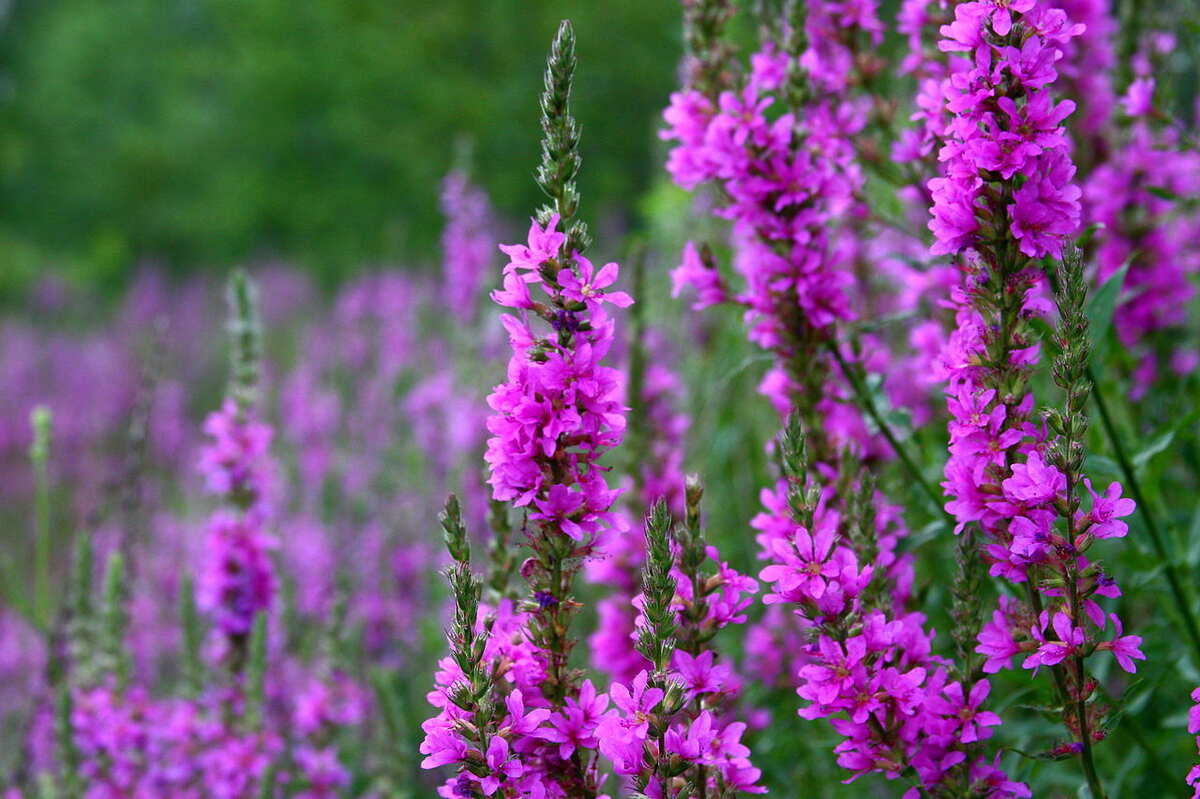
Noxious weeds are some of the worst weeds around. It’s not because they’re unsightly – some of them are quite pretty, actually; it’s because they are so prolific that they cause significant damage not just to the environment but also to the economy. There are quite a number of noxious weeds in Nebraska that homeowners should be aware of, including:
While not all of the weeds on this list will affect you personally, it’s important to identify them, as Nebraska landowners are required by law to control them. “Noxious” is not just any ol’ descriptor; it’s a legally-defined term for especially harmful and destructive weeds.
1. Canada Thistle
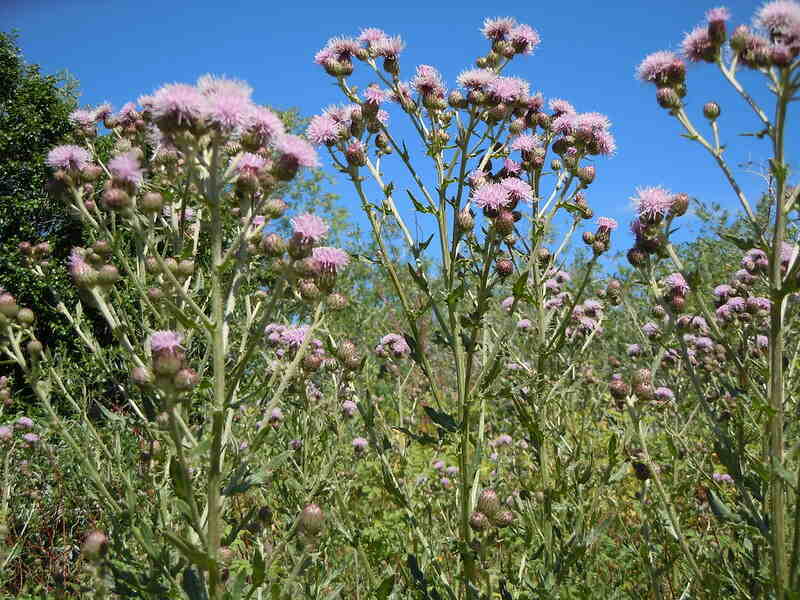
Species name: Cirsium arvense
Also called creeping thistle and California thistle, the Canada thistle is a highly aggressive noxious weed in Nebraska and across the Great Plains. Declared a noxious weed in the state in 1873, you can find it in croplands, wet pastures, lake shores, and drainages. It hits farmers the hardest, as it can reduce crop yields and prevent them from taking on more cattle.
Canada thistle’s pretty pink-purple (sometimes white) blossoms bloom from June to August. Its brownish-tan fruits contain seeds that can survive for up to 20 years. Combined with its ability to spread through its deep root system, this noxious weed is the most difficult thistle to control in Nebraska.
While Canada thistle is persistent, repeatedly destroying its new shoots can help discourage it from spreading. There are some herbicides that help kill this weed, but you often need to apply them multiple times before it’s fully eradicated.
2. Musk Thistle
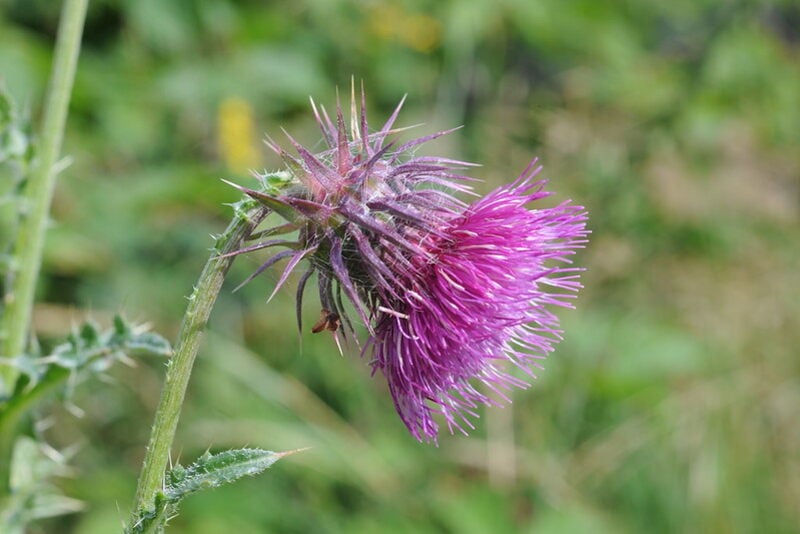
Species name: Carduus nutans
Infesting pastures and rangelands, the musk thistle was identified in Nebraska in 1932 and declared a noxious weed in 1959. It goes by many names: Don Krause thistle, nodding thistle, and nodding plumeless thistle. This escaped ornamental plant successfully competes with grasses and other native plants for water and nutrients.
The musk thistle has rose-purple or white flowers and serrated leaves. While it looks similar to the plumeless thistle, the musk thistle’s leaves aren’t as deeply serrated, making them look slightly bigger. Musk thistle leaves also lack hair.
Although musk thistle feeds butterflies and songbirds, there are many other native Nebraska plants that do the same job without severely affecting other plants. To control musk thistle, homeowners should dig it up and remove its blooms. Burn the flowerheads, as the seeds stay viable even after several years. Mowing helps temporarily prevent mature plants from producing seeds. You can also use herbicides to control musk thistle.
3. Plumeless Thistle
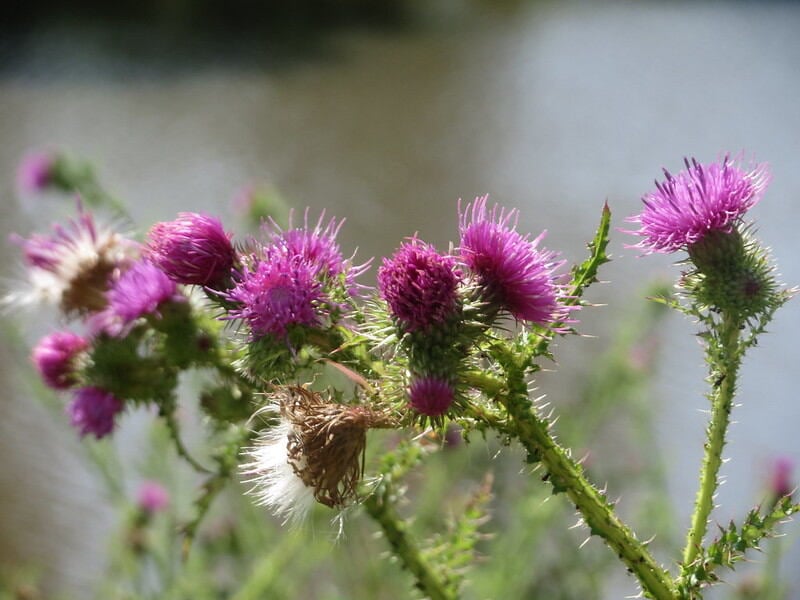
Species name: Carduus acanthoides
Declared a noxious weed in Nebraska in 1967, plumeless thistle is also considered noxious in many other states. Also called the spiny plumeless thistle and the smallhead plumeless thistle, it resembles the musk thistle and the Scotch thistle. The former has different leaves while the latter has a blue tint to its foliage.
Plumeless thistle’s flowers are typically purple, but on rare occasions, they bloom white or yellow. Like the musk thistle, this noxious weed is a butterfly-friendly plant whose seeds also feed songbirds. Its seeds can remain dormant for several years, sometimes viable even after a decade.
The methods to control plumeless thistle are the same as controlling musk thistle. You can mow them, dig them up, burn their seedheads, and apply herbicide.
4. Leafy Spurge
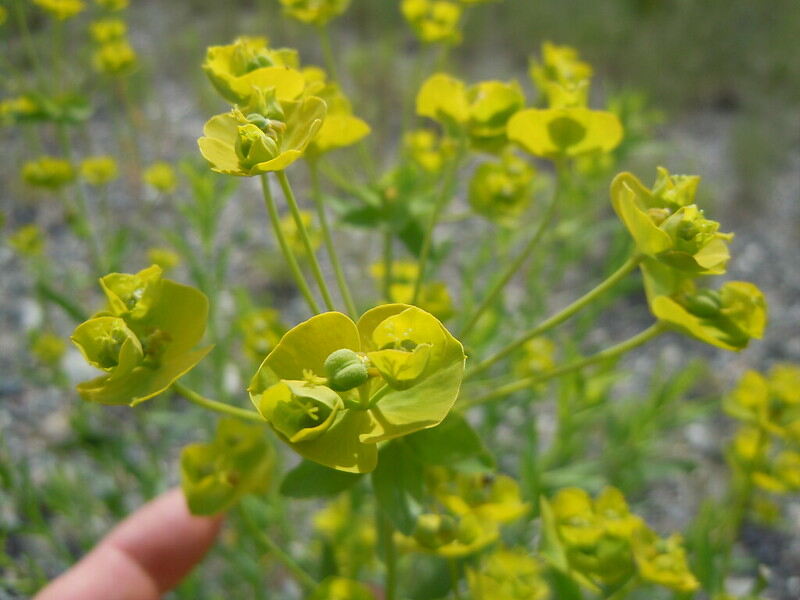
Species name: Euphorbia esula
The leafy spurge is another weed that’s considered noxious in many states outside of Nebraska. Declared noxious in 1962, it also goes by the following names: cypress spurge, green spurge, and wolf’s milk. It produces a milky white latex sap when cut. Be careful not to touch it with your bare skin, as some people get severe skin irritation from coming in contact with it. It’s also toxic to livestock.
Since it was first sighted in York County in 1923, leafy spurge has spread to at least 82 Nebraska counties. It’s a very persistent weed; it can grow pretty much anywhere, and it spreads easily, growing from seeds, roots, and buds. You can identify leafy spurge most easily through its flower-like bracts. Blooming from May to September, these bracts are heart-shaped and greenish-yellow in color.
While mowing temporarily prevents seed development, one of the only ways to actually get rid of leafy spurge is with herbicides.
5. Spotted Knapweed and Diffuse Knapweed
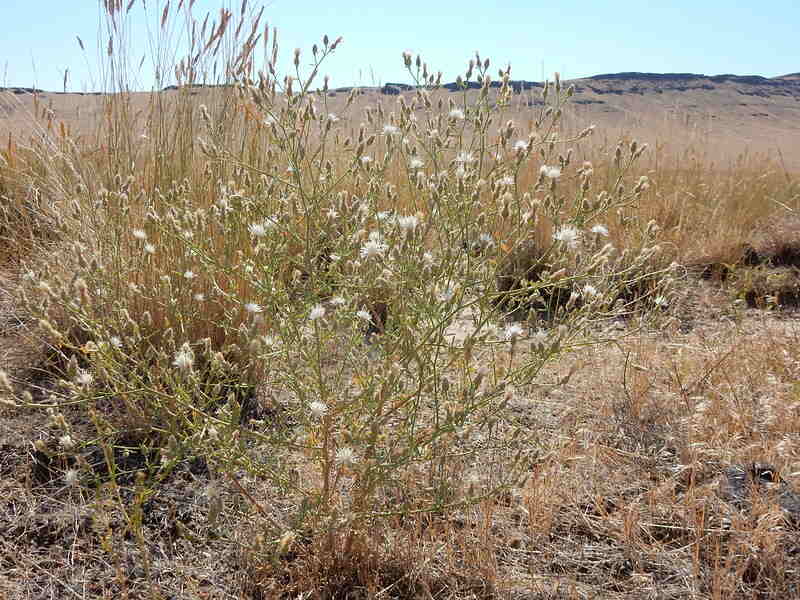
Species names: Centaurea stoebe ssp. micranthos, Centaurea diffusa
Infesting mostly the north-central part of Nebraska, spotted and diffuse knapweed were both declared noxious weeds in the state in 1992. They are a little toxic and capable of causing a rash when touched; they can also cause chewing disease in horses when eaten in large quantities. The two species look very similar, with pink-lavender (sometimes white) flowers, but spotted knapweed blossoms are larger.
Knapweeds are quite a nuisance. They can grow in dry, disturbed soils and compete heavily with other plants in the area. They are such prolific competitors that they can even stunt the growth of other plants. They are also unwelcome inhabitants of recreational areas, as their rough stems and spiny heads are difficult to walk through.
You can control knapweeds in a similar fashion to other weeds. Mowing temporarily prevents seed production, but digging them up and removing their flowers is more permanent. You can also apply herbicide to knapweeds.
6. Saltcedar
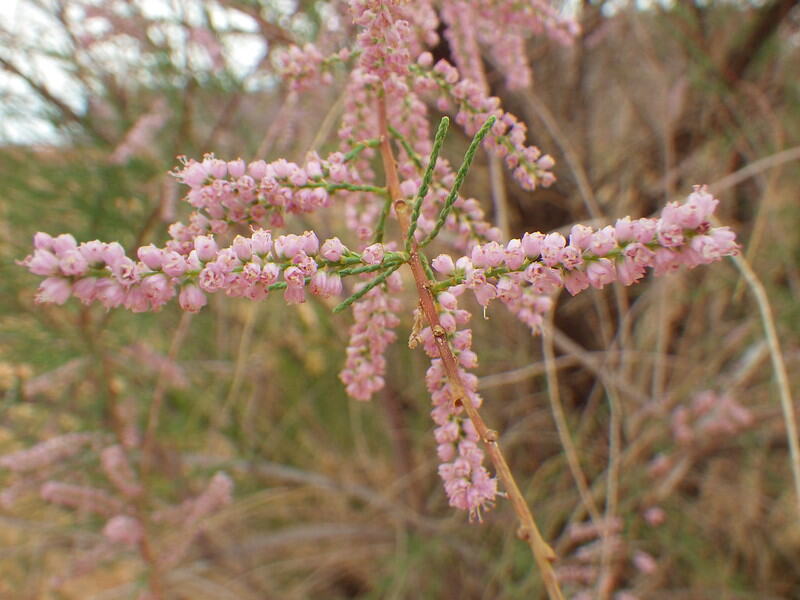
Species name: Tamarix ramosissima
Also known as tamarix or tamarisk, saltcedar is a shrub – or small tree, depending on how you look at it – that’s sometimes used as an ornamental plant. This is not too surprising, as it becomes quite the sight from May to September with a multitude of white to deep pink flowers. However, it was declared a noxious weed in the state in 2005.
But why? Aside from being very competitive, saltcedar uses up a lot of water. In fact, it’s believed to have contributed to lakes, streams, and rivers drying up in the southwestern part of the country. Saltcedar also thrives on shores, making them more difficult to use for recreation. Saltcedar increases the salt level of the soil, too, which can be deadly for some plants.
Control methods for saltcedar differ based on how large it is. Smaller, newly-emerged plants should be dug up, taking care to get as much of their extensive root system as possible. Large saltcedars should be cut down and their stumps treated with herbicide. In either case, the plants should be dried and then burned to prevent them from regrowing. You should also never mow saltcedars, as they can regrow from the tiny pieces chucked out by the mower.
7. Sericea Lespedeza
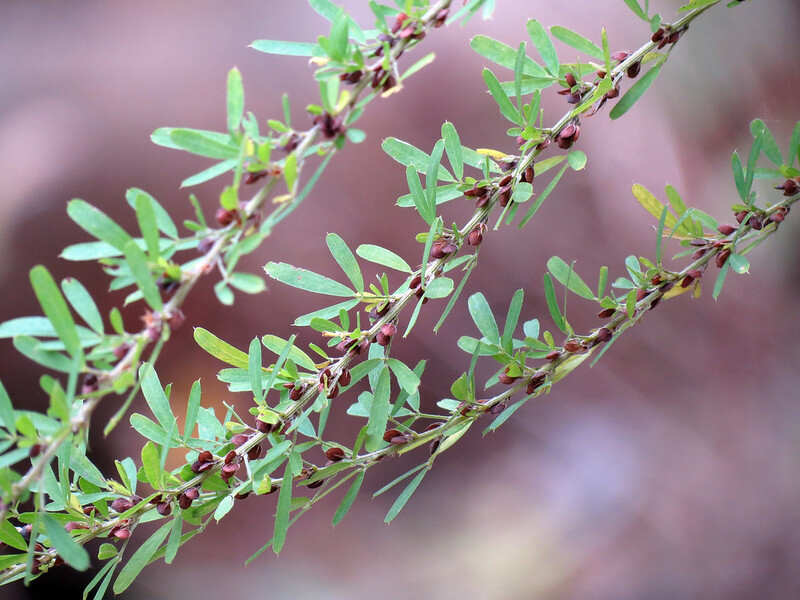
Species name: Lespedeza cuneata
The highly competitive sericea lespedeza is mainly found in southeastern and south-central Nebraska. Competing with native grasses, it’s a persistent plant that can survive in prairies, hayfields, roadsides, and even waste areas. It was first collected in Nebraska in 1974, but it was only added to the state’s noxious weeds list in 2013.
Also known as sericea, Chinese lespedeza, and Chinese bushclover, this plant grows from 3 to 6 feet tall. It has 3-leaflet clusters and white or cream flowers that appear from July to October. The foliage of sericea lespedeza is eaten by deer, rabbits, and wild turkeys, while its seeds are enjoyed by birds like quail.
Sericea lespedeza spreads through rhizomes and seeds, which can stay dormant in the soil for over 20 years. How do you control this noxious weed? You can mow it, burn it, or apply herbicide.
8. Purple Loosestrife
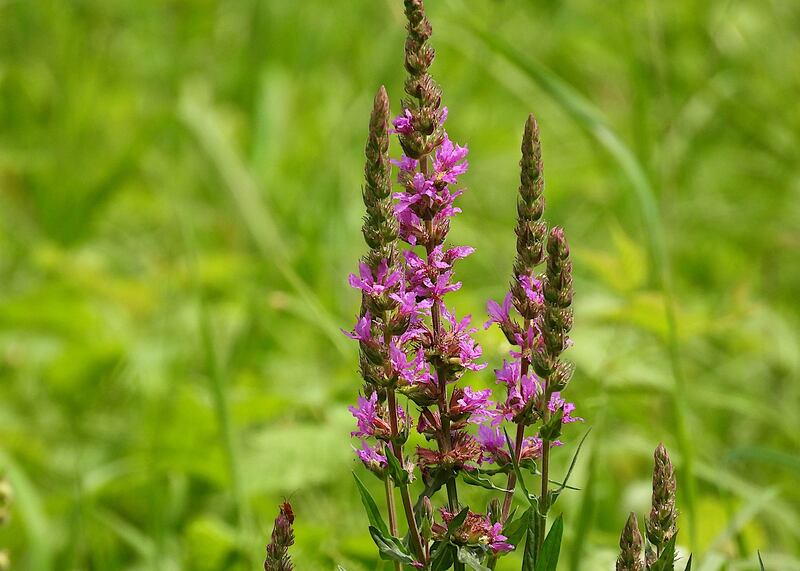
Species name: Lythrum salicaria
The purple loosestrife goes by many other names: purple lythrum, spiked loosestrife, and salicaire. Declared noxious in Nebraska in 2001, its highly aggressive nature has landed it a spot on some other states’ noxious weed lists, too. It’s typically located in wetlands, marshes, and near bodies of water.
Purple loosestrife is an escaped ornamental and an excellent honey plant. It has rose-purple to magenta flower spikes, and each flower has six petals. It’s important to identify it correctly, as it looks quite similar to some native loosestrife species, mainly the winged loosestrife and the California loosestrife.
You can control purple loosestrife by digging it up or hand-pulling it, making sure to remove as much of its root system as possible. You can also use herbicide to get rid of it. Don’t mow this plant, as it can regrow from small pieces.
9. Common Reeds
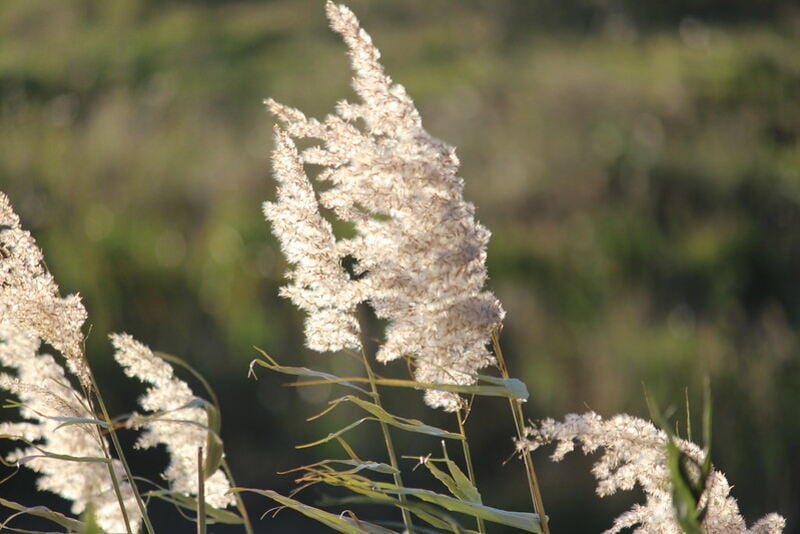
Species name: Several species under the genus Phragmites
Also known as phragmites, giant reeds, and canegrass, common reeds are a mix of native and invasive grasses. However, not all of them are noxious; only the non-native species were declared noxious in Nebraska in 2008. These large grasses can alter the environment around them, making the area they’re in more flood-prone because of how they restrict the flow of water.
Noxious common reeds have dense flowers and are colored tan to purplish. They are found throughout the state, but the worst infestations are found in the Platte River. However, they can and have also infested drier areas.
There are many ways to control common reeds. Aside from the common mowing, digging, and herbicides, landowners can also have livestock graze the plants. When mowing, you have to be aware that common reeds can resprout from the small plant parts that mowers can produce.
10. Giant Knotweed and Japanese Knotweed
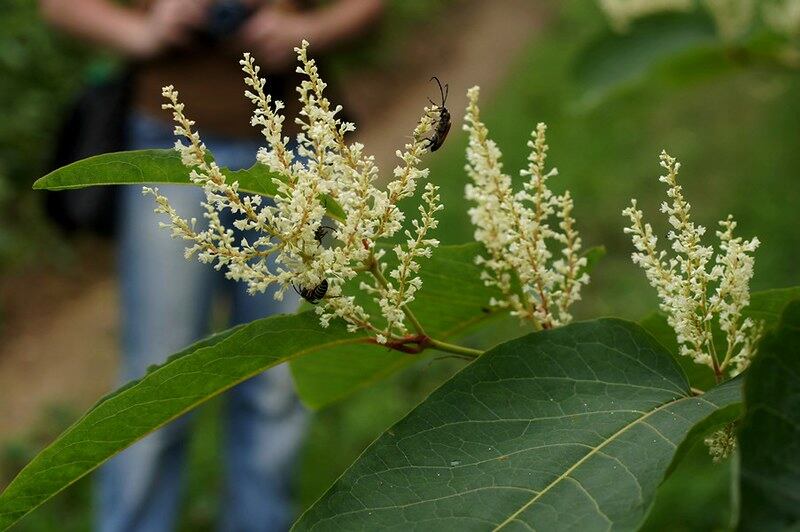
Species names: Reynoutria sachalinensis and Reynoutria japonica
The giant knotweed and Japanese knotweed are relatively new additions to the Nebraska noxious weeds list. Declared noxious in 2011, these bush-like plants thrive in the same places as common reeds do. Like the common reed, knotweeds can also make the area they’re in more susceptible to flooding.
The two knotweed species look quite different:
- The giant knotweed is very large, with heart-shaped leaves that are more than 1 foot long.
- The Japanese knotweed has a cane-like stem and smaller 6-inch leaves that are squared at the base and pointed at the tip, making them more oval in shape.
- They both have whitish-green flowers that cluster together.
- The Bohemian knotweed (Reynoutria x bohemica) is a hybrid of the two species and has traits from both.
Knotweeds spread through seeds, roots, stem fragments, and their toxic rhizomes. You can get rid of them by digging them up, cutting them, and applying herbicide. However, cutting knotweed only removes the upper portion of the plant. You’ll need to combine control methods to even get close to removing them from your property.
FAQs About Noxious Weeds in Nebraska
The Nebraska Department of Agriculture recommends contacting your local county’s noxious weed control authority for any questions or concerns. You can report an uncontrolled noxious weed infestation to them, too.
Otherwise, you can contact a lawn care company near you for weed control advice.
Some non-noxious weeds that you might want to keep an eye out for are:
• Crabgrass
• Foxtail
• Nutsedge
• Yellow sorrel
• Other spurge species
• Dandelions
• Henbit
These weeds can be taken care of during your spring lawn care or fall lawn care routines. Also keep an eye out for the most common lawn and garden pests in Nebraska, since the same conditions that cause these weeds tend to attract pests.
Noxious means “harmful” or “destructive”. The Nebraska Department of Agriculture defines noxious weeds as pests that “pose a serious threat to the economic, social, or aesthetic well-being of the residents of the state”. Usually, these weeds cost the state millions of dollars because of production losses and weed control.
Nip Nebraska Weeds in the Bud
Weeds – especially noxious ones – can be tough to get rid of. However, it’s important to always be on top of your weed control – if not for aesthetics, then for the overall health of your lawn. If weeds are starting to wear you down, then don’t be afraid to call in the big guns.
LawnStarter can connect you with a Nebraska landscaping expert who can formulate a plan to keep weeds in check on your property, whether you live in Omaha, Lincoln, Elkhorn, or anywhere else in Nebraska.
Main Image Credit: liz west / Wikimedia Commons / CC BY 2.0